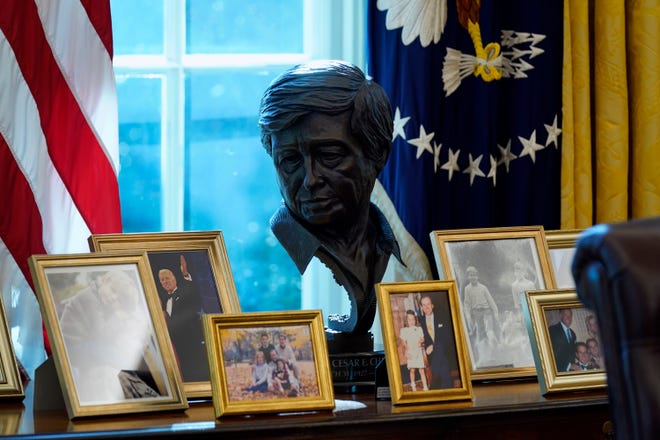Two segments of the U.S. population are a step closer to being able to declare their self-identity more accurately.
For many Americans of Middle Eastern or North African background, filling out federal forms has been a source of frustration when such individuals are officially classified as white. Meanwhile, many Latinos, after identifying as such, have been perplexed by being further required to choose a race.
But changes proposed by the nation’s top statistician for how federal agencies collect such data would create a Middle Eastern and North African category. It would also combine race and ethnicity into a single question for everyone, eliminating the need for Latinos or anyone else to pick a particular race under which they fall.
“We’re optimistic that this indicates that the government recognizes the distinctness and unique experience of our community,” said Adam Beddawi, federal policy manager for the National Network for Arab American Communities.
How did these proposals come about?
In June, the U.S. Office of Management and Budget said that in an effort to better reflect national diversity it would review standards governing how federal agencies, including the Census Bureau, collect race and ethnicity data.
In September, as the OMB updated its best practices and outlined ways to collect more detailed demographic data, it included a footnote with a sample question that addressed Middle Eastern and North African ancestry. MENA community advocates took that as a hopeful sign.
Beddawi said the proposed revisions, among the initial changes suggested by an interagency working group reviewing the OMB standards, provide further hope.
“It’s a good sign,” he said. “But it’s not over till it’s over.”
For decades, the nation’s estimated 3.7 million Arab Americans have had to self-identify as white on government forms, with federal standards defining white as “a person having origins in any of the original peoples of Europe, the Middle East, or North Africa.”
The population has at least doubled since 2000, driven by the arrival of mostly Muslim immigrants and refugees, the product of multiple wars and Middle East instability. Especially after 9/11, checking the “white” box creates dissonance for some Arab Americans, whose experience doesn’t always offer the privileges of being white.
The federal working group noted that advocates argued for a distinct category since many in the community “do not share the same lived experience as white people with European ancestry, do not identify as white and are not perceived as white by others.”
Additionally, for many Latinos, having to identify as anything else has been confusing. Arturo Aldama, ethnic studies department chair at the University of Colorado Boulder, said his Latino students report being stymied by such questions since they identify as neither Black nor white but as Chicano, mestizo or indigenous.
Some tell him they mark “American Indian” even though they know that’s not quite correct either.
“Over half have said, ‘Those questions make no sense to me,’” Aldama said.
Should the revision be approved, he expects the number of non-Hispanic whites to drop dramatically as a result.
“The amount of people who identify as white will be much less,” he said.
Why does this matter?
Arab Americans have fought for federal recognition for decades. There’s more at stake than identity: Without community-specific data, Arab Americans miss out on funding for social and health services that could address issues unique to the population and go uncounted by researchers tracking employment discrimination or infant mortality rates.
A lack of health data, for instance, cloaked the COVID pandemic’s effects on the nation’s Arab population.

Rashad Al-Dabbagh, executive director of the Arab American Civic Council, an advocacy agency in Anaheim, California, called MENA communities “the most visibly invisible population in America.”
“People can see their storefronts, hear them speak their language and even experience their culture,” Al-Dabbagh said. “Yet when these individuals try to apply for business loans, get health screenings or even document their needs when immigrating into the country, the federal government does not have a proper box to identity them.”
Beddawi said MENA individuals are twice as likely as whites to live below the poverty line and far less likely to be educated beyond a high school degree. When such data is lumped in with the white population, “you’re creating an inaccurate picture that underestimates the problem,” he said.
Likewise, the lack of data stifles agencies’ ability to make sure city leaders consider the community when funding small-business opportunities.
“MENA communities are excluded despite evidence of disparate socioeconomic status,” said Nadia Mavrakis, executive director of Culturingua, which promotes MENA community development in San Antonio, Texas.
What’s next?
The proposed revisions are open for public comment until April 12, and the working group aims to submit final recommendations by summer 2024.
Even if creation of a MENA category is among them, Beddawi worries that federal agencies may not have time to implement the new guidelines if they’re reversed by Biden’s successor should he not win a second term.
But the real answers, he said, may lie down the road, if and when the curtain is pulled back on the population’s true size and needs.
Will they, Beddawi wonders, be prepared to respond?

